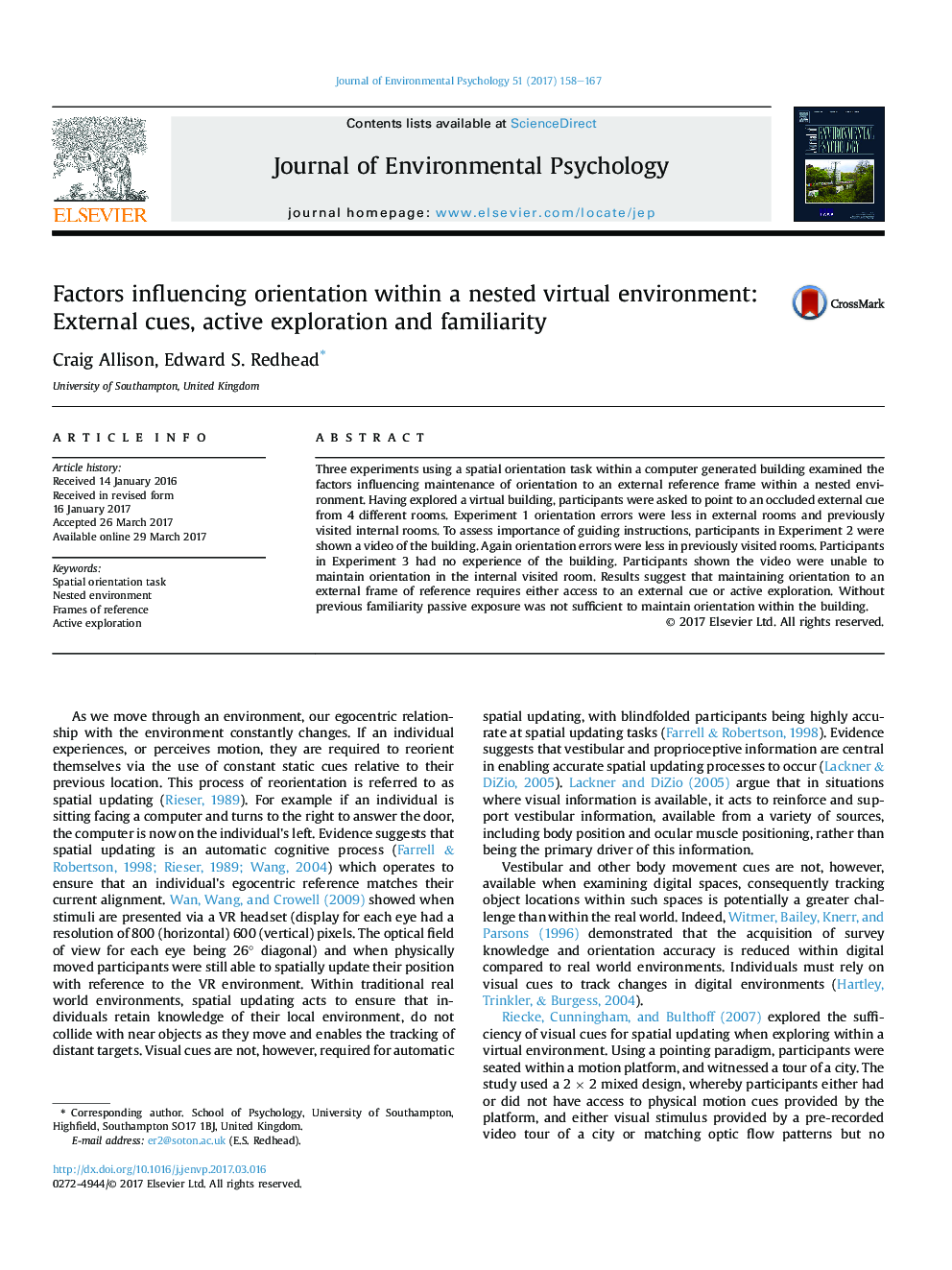| Article ID | Journal | Published Year | Pages | File Type |
|---|---|---|---|---|
| 5034865 | Journal of Environmental Psychology | 2017 | 10 Pages |
â¢Experiments examined factors influencing orientation within a virtual nested environment.â¢Results suggest orientation requires access to the external frame of reference or active exploration of the building.â¢Without familiarity with environment passive exposure was not sufficient to maintain orientation within the building.
Three experiments using a spatial orientation task within a computer generated building examined the factors influencing maintenance of orientation to an external reference frame within a nested environment. Having explored a virtual building, participants were asked to point to an occluded external cue from 4 different rooms. Experiment 1 orientation errors were less in external rooms and previously visited internal rooms. To assess importance of guiding instructions, participants in Experiment 2 were shown a video of the building. Again orientation errors were less in previously visited rooms. Participants in Experiment 3 had no experience of the building. Participants shown the video were unable to maintain orientation in the internal visited room. Results suggest that maintaining orientation to an external frame of reference requires either access to an external cue or active exploration. Without previous familiarity passive exposure was not sufficient to maintain orientation within the building.
